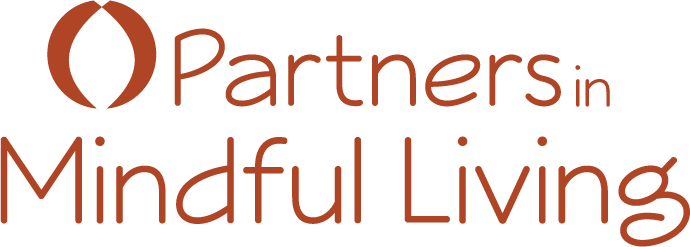
There is an alternative.
March 21, 2021
Just breathe.
I’m a meditator. I teach meditation. And sometimes, for weeks in a row, I don’t get on the cushion and meditate. There, I’ve said it.
But what I do every day is breathe. And I do it in a way that kicks my vagus nerve into gear, over and over. The vagus nerve triggers my parasympathetic nervous system to help me calm my over-stimulated sympathetic nervous system. That process allows me to function as a decent human being, i.e., mindfully moving through my day without doing too much damage to myself or anybody else.
I started meditating to become a better person. I ended up meditating to become the person I am.
It’s hard to be a good friend, partner, or family member if you’re asleep to who you really are. Meditation is one way to wake up.
I suspect it will always play a significant role for me, but it is not the only path to a satisfying life, despite what you may have heard. Just like AA, it’s not for everybody.
Just in case you’ve been misinformed, and you’re not meditating because you believe you’re not the right candidate, please consider this: my experience is that the people who think they suck at meditation can benefit the most. But sometimes they need a new idea about how it works and why to do it.
Before I explore the alternative to formal sitting meditation, let’s clarify, and simplify, meditation.
Meditation
Sitting or walking meditation is not about achieving a blissful or non-thinking state (although that can occasionally happen). It’s about building your attention muscle–by bringing attention back to the breath over and over–just like you build a muscle at the gym through repetitions.
The goal is to be able to choose where you put your attention, rather than allowing your mind to lead you around by the nose 24/7.
You can’t do it wrong. When your attention wanders, no matter if it’s once or twenty times before you return to your breath, you meditated. I’ve had whole arguments in my head, playing both roles, before noticing my attention wandered. It was not blissful, but it was meditation.
Meditation can show us, relatively quickly, how irrational our minds can be at times. Seeing how easily we’re distracted, or blaming others for our discomfort, can be uncomfortable, but seeing is necessary for developing healthy relationships.
If I can’t see what I’m doing, or don’t notice it, I can’t change it. Meditation gives us an opportunity to take responsibility for ourselves. To be in charge of our minds, rather than at the mercy of them.
My favorite book on meditation is Joko Beck’s “Nothing Special, Living Zen.” She was a Buddhist nun, down to earth and human. I still consider her a mentor though we never met.
If you’re still not convinced, that’s okay. There is an alternative. Just breathe.
Breathing
I don’t spend a lot of time encouraging people to meditate formally. Hell, as I said, I don’t do it anywhere near as much as I tell myself I should.
I do encourage clients to put most of their attention on being present in their day, moment to moment. Reeling themselves back in off of autopilot so that they can be awake to who they want to be. This is the basic building block for healthy relationships, with ourselves, and with others.
Autopilot is great for tying shoes or riding a bike, but not so great when we’re about to do something impulsive or shoot our mouths off when we’re triggered.
In my book, the best mindfulness tool outside of formal meditation is the breath. I rely on two breathing practices.
The Andrew Weil Breath
I learned to do the Andrew Weil breath over thirty years ago when I worked in advertising.
I would get triggered over any number of things, and I would start to hyperventilate. To catch my breath, I would close my office door and lie on the floor. Not workable in a meeting, right? So I looked for other tools and came across the Andrew Weil breath.
Most of us don’t exhale entirely. We breathe using only the top third or half of our lungs. Especially when we’re anxious, we try to take a deep breath, but since we haven’t fully exhaled, we can’t, and then we start to hyperventilate.
Andrew Weil came up with a brilliant workaround — the 4–7–8 breath — making your out-breath twice as long as your in-breath:
Breathe in through your nose to a count of four.
Hold your breath for a count of seven. (I tell clients who have difficulty holding their breath not to worry too much about doing this step exactly — a count of four or five is fine.)
Breathe out through your mouth with a whooshing sound to a count of eight. The exhale works best when you make the whooshing sound, but when you’re in a room full of people, not so much. No worries, it still works if you do it without the whoosh.
Weil suggests doing these three steps four times, to make sure you’ve engaged the parasympathetic nervous system.
Back in the day, I felt like I had discovered a magic elixir. And in a way, I did. It not only got me off the floor, it led me to explore an even quicker way to engage with the breath.
A Simpler Breath
I developed what I call ‘the green card’ practice, when I was working with undocumented immigrants, for whom a green card meant freedom.
My green card includes only three short sentences.
Pause.
Breathe all the way out.
Soften your body.
To me, those three lines represent freedom. The moment one breathes all the way out while softening the body, everything calms down, and we come back to ourselves. The same result that I get with the Weil breath.
When you’re stressed, make sure to empty your lungs, and at the same time, soften your body — relax your forehead, jaw, chest, and belly, and drop your shoulders. You will come back to yourself. There’s something about softening the body that allows those stressful feelings to have their organic life and then leave. When we tense up, we repress emotions and keep them trapped and stored.
And here’s one more idea to tuck away and sit with occasionally.
Your Body
Do some somatic work. Meditation is about coming home, over and over, to right now. And your body and your breath can bring you back whether you’re sitting on a pillow or cooking dinner.
Together, your breath and your body are a perfect combination to reel yourself back in no matter where you are or what you’re doing.
Working with the body can be a little confusing, because we tend to think about our feelings rather than experience them. But as soon as we get into our heads and start trying to logic feelings, we’re repressing them, says Russ Harris in The Happiness Trap.
Feelings express as physical sensations in the body, and often, just by putting our attention on them, relaxing into them, and letting them have their organic life, they express and leave.
A great book to explore how mindfulness works with your brain, mind, and body in healing trauma is a New York Times bestseller, “The Body Keeps the Score” by Bessel Van Der Kolk, M.D., a leader in the field of trauma and somatic work.
My Goal
My goal is not to talk you out of meditation, because the benefits are countless. But if it turns out formal meditation is not your cup of tea, I want you to know you have alternatives..
Whether you meditate or not, your breath and your body are always with you as powerful teachers and supports. Let your breath and your body work together to change your relationship with yourself and with everyone you meet.
Much love,

I teach breathing. I didn’t know it was called the Andrew Weil breath. For those who are highly anxious, I tell them to think about their breathing. Some say it doesn’t work for them, so I ask them to keep trying.
Yes, It’s hard to get over that initial hump of awkwardness when something is new and takes practice. But if they can hang in there and keep practicing there’s such a huge pay off.
“I do encourage clients to put most of their attention on being present in their day, moment to moment. Reeling themselves back in off of autopilot so that they can be awake to who they want to be. This is the basic building block for healthy relationships, with ourselves, and with others.” –Robyn
“Acceptance is the answer to all my problems.”–AA 4th Edition, page 417.
“When I am in the Present, I am in God’s presence.”–Brother-in-law.
I am breathing better now, bringing me back to the now, and very thankful for your timely reminder.
Thanks for your thoughts Dick. It’s so easy to forget and sort of get lost. It helps to have quotes and tools and anything we can get our hands on that reminds us.
Gosh, this is great. I needed a reminder. Thank you, Robyn!
Thanks mary Lou. So agree—the hardest part is remembering!